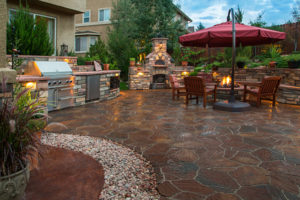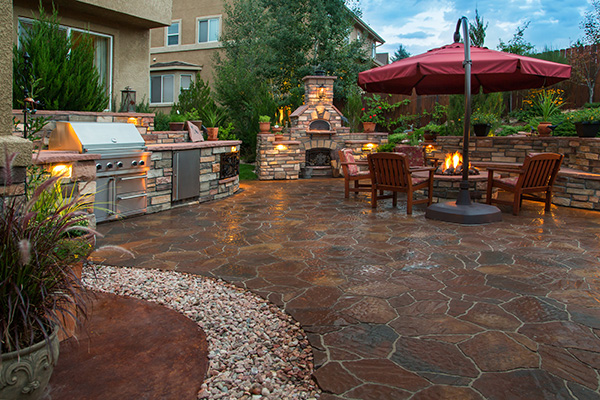 There is certainly money to be made for builders who offer consumers outdoor living spaces and options, but there is also risk. Decades ago, people thought of outdoor living spaces as just patios, decks, a grill, table and chairs. Today, society has moved on to demand much more sophistication.
There is certainly money to be made for builders who offer consumers outdoor living spaces and options, but there is also risk. Decades ago, people thought of outdoor living spaces as just patios, decks, a grill, table and chairs. Today, society has moved on to demand much more sophistication.
The builder can make more money, but do they have to accept more risk? No, in fact, builders can increase profit and lower risk by implementing a few simple best practices.
Outdoor kitchen risk is highly minimized with these best practices:
Advertisement
- Don’t hire just any contractor. Outdoor kitchens require plumbing gas lines and water lines. Add to that the reality of consumers’ inability or unwillingness to read directions, and there is a lot that could go wrong. Hire a well experienced contractor with deep industry and outdoor kitchen experience.
- Hire a contractor that will not allow shortcuts. In fact, the right contractor will decline work from builders not focused on due process.
The following steps will ensure a high-quality outdoor kitchen project, that will provide enjoyment for your clients for years to come:
- Install a steel framed Hardi-backer wrapped box. (While backer board is not one-hour fire rated, it does meet all of the requirements.)
- Provide venting cutouts (very important as required by grill manufacturers.)
- Next, install the veneer, stone, stucco or brick.
- Install the countertop using granite preferably, but concrete or limestone are acceptable.
- Once all the cutouts are made, polish all edges that may be visible once appliances and stainless are installed, OR edges which may come in to contact with any gas or plumbing lines.
- Install all of the appliances, stainless, etc. Your licensed plumber is responsible for hooking up all of the water, drain, and gas, while the licensed electrician is responsible for trimming out electrical outlets that are used for refrigerators, grills or other items. Your outdoor kitchen/landscape architect should NOT install these mechanicals.
- Upon completion, leave the grill manual, other appliance manuals and warranty information inside the grill along with a warranty service call form for the homeowner.
In order to reduce your risk, we recommend following these best practices, venting properly, installing with noncombustible materials and ensuring installation meets current codes and standards. It is imperative that outdoor kitchen installations are performed with high structural integrity in order to meet your standards as well as your customers’ satisfaction!
Article provide by Bill Ellison, president of All Services Group Inc. ASG is a residential and commercial remodeling company, specializing in outdoor kitchens and outdoor living for new home builders in the Greater Houston area. Learn more at www.AllServicesGroupInc.com or call (888) 991-0005.

